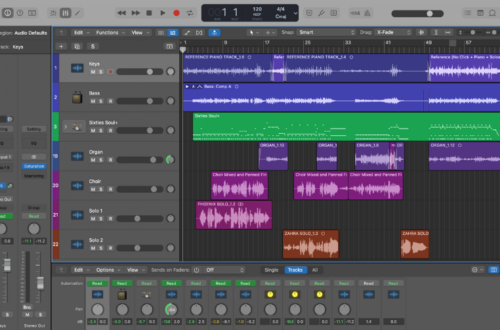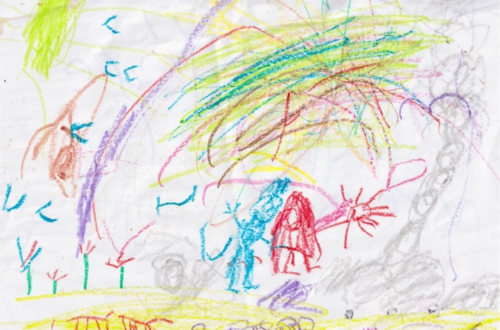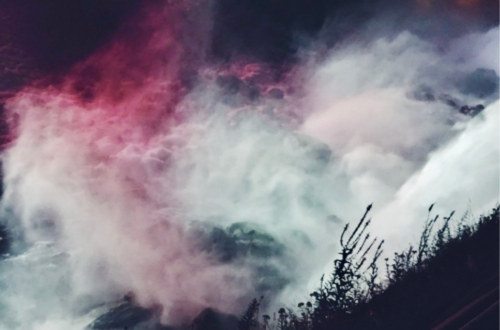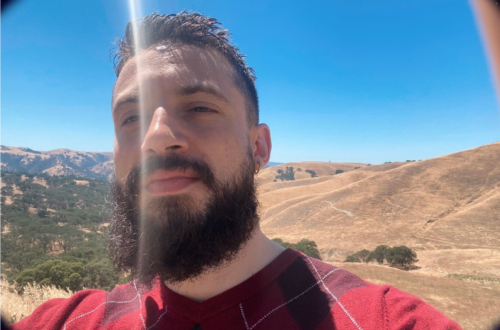Interview with Michael J. Bosco—Author, Musician, and Educator
1. How did you get the idea for the "Somebody to Love” video, and have you done similar projects with other schools?
The idea for the video came from my friend and colleague, Sarah Mae Lagasca. At the time, she was a vocal music teacher at Arts High School in Newark, New Jersey. We were in the era of Covid, and she wanted to provide her students with an opportunity to remain collaborative despite the circumstances. She called and asked if I would be willing to help out with their music video. I immediately said yes.
Since then, we have done similar projects with other schools. Through our company, Ambitious Music, we’ve been fortunate to work with absolutely amazing student musicians and educators nationwide, including a project in New York documented by Apple in which we converted a high school music room into a makeshift recording studio during the pandemic, and another project in the Bay Area where we produced the cast album for [INSERT future HERE]—an original musical written by a group of high school students over Zoom during lockdown.
2. It seems like a lot of work must have gone into organizing, conducting, producing, and editing the project, especially with the limitations of the pandemic. How did you manage all of that?
Sarah Mae and I had years of experience collaborating on creative projects before this one (we started out playing in a band together in New York City in our early 20’s), so we knew how to divvy up our roles synergistically. On my end, the biggest challenge was mixing the vocals. We were able to record some of our students safely in-person using studio-grade gear, but others recorded themselves from home using Airpods, smartphones, and laptop mics.
After learning their parts, they sang along to a piano track and sent us their videos for editing. Their performances were, of course, fantastic. The challenge was getting them to sound cohesive as a group.
As you can imagine, the audio signal quality of a Chromebook mic or a pair of Airpods is vastly different than that of a professional microphone. My job as post-production engineer was to blend these signals together in a way that sounded harmonious, with each student audible and showcased in their best light, balanced with the instruments. This required EQ-ing (adding or subtracting certain frequencies from an audio signal) and compression (minimizing the distance between its high and low volume points), but in the end I was able to craft something I thought we would all be proud of, my job made easier by the incredible talent of our students.

Screenshot of the “Somebody to Love” project in Logic Pro
Sarah Mae was in charge of the video editing, vocal coaching, and arranging. She also provided the initial vocal mix for me to build upon. Given her strong bond with her students and her own stellar musicianship, she knew how to spotlight them in a way that beautifully captured their personalities and skills.
After the video was complete, it was featured by VH1 Save the Music, Nickelodeon, and Paramount Studios—a satisfying result for everyone involved.
3. You also are working on a book project, The Bug Ceremony. What are your hopes for that project?
The Bug Ceremony is a collection of stories detailing experiences in nature with my young niece, Mila. They begin at age two—when I first witness her speaking with the bugs in her grandmother’s backyard—and continue until age five. As her love for the Earth grows, she invites me to experience it with her, revealing a world of enchantment, wonder, and relationship.

Mila and her uncle (Artwork by Mila S.)
My only hope for the book is that someday she will read it.
4. Will you try to publish your book through a traditional publishing house? How does your Kickstarter campaign work toward that goal?
My goal is to publish through a traditional publishing house. The stories are short—about 1-2 pages each—which makes the book quite light and digestible. As one of my mentors said, “It’s a book that calls for a lot of white space.” It can easily be read in one sitting, and revisited over and over again. There are throughlines that weave the stories together, but readers can also open it up anywhere and enjoy each story on its own, too. Coupled with the ethos of the book, I believe these qualities will heighten its appeal to a publisher, so I’m excited to send it out later this year.
I was fortunate to have a successful Kickstarter campaign to help fund this project, one with a somewhat unusual format.
Most literary Kickstarters are created to raise funds to cover the cost of self-publishing. In my case, I needed the ability to focus solely on writing for a few months without worrying about the cost of living.
Rather than apply for an institutional writing grant, I decided to take a chance and seek out a crowdfunded grant from people who believed in my work. This was an opportunity to gauge public interest and build community around the project while affording me the space and time to finish the manuscript, which, thanks to the generosity of my backers, is now almost complete.
5. What are some of your inspirations for your music and for your writing?
I struggle with this question. As a top contour, I could say that I’m inspired by my niece Mila and her intuitive love for the cosmos. I might also mention other creatives who I draw influence and strength from, such as Marc Chagall, Virginia Woolf, Deantoni Parks, Björk, Alan Watts, Charles Bukowski, Tom Waits… I could then go on to deconstruct the qualities of each individual and their work in an attempt to pin down what it is that inspires me, the whys and the hows, and talk in circles trying to apply rationality to something that is inherently irrational, and probably unsayable.

Mist over Niagara Falls, 2019. (Picture by MJB)
Rather than thinking of inspiration as something explicable and causally imparted by discrete events, phenomena, or people, I’m keen on thinking of inspiration—like intuition—as a transpersonal emergence, something inextricable from the clouds in the sky, the breeze through your bedroom window, your heartbeat, the feeling of love you have for your cat—all the seen and unseen, known and unknown features of our cosmos that, while at times distinct, cannot be pulled apart.
Through the flux of that whole, inspiration emerges, like water shooting up from a geyser.
Here’s another illustration:
A few months ago I was walking down the hallway of a school in southern Connecticut where I was guest teaching. As I turned a corner, I saw a cluster of 4 or 5 yellow lockers perched beside a large glass window framing a patch of lush green forest. The yellow paint was chipped around the edges, exposing the sheet metal beneath, which gleamed in the light.
Words fail to explain how that inspired my musicianship that day.
6. You graduated from WCSU with a Professional Writing degree—what was useful to you in your studies at WCSU?
My years at WCSU were well-spent under the tutelage of Drs. Brian Clements and John Briggs—two professors who had a profound impact on my appreciation of literature and aesthetics.
I was a fledgling writer at the time. Most of my non-academic writing was highly experimental, and oftentimes, very cringe. Having an environment in which to explore the language under the guidance of experienced and empathetic professors who cared about the quality of my work was paramount to my development as an artist. Being immersed in a community of writers my age was also formative, the program fostering a built-in network of peers with whom to share and learn from. I remember fondly the days and nights spent in the Midtown library and the Westside Nature Preserve crafting poems and short stories that would form the basis of my present-day work.
It was an inspiring time, though I couldn’t explain why.

Michael J. Bosco is an author, musician, and educator from New Haven, Connecticut. A former special education instructor, he has lectured in the Montessori M.Ed. program at The Institute for Educational Studies. He sits on the board of the Center for Compassion and Creativity in collaboration with the Schweitzer Institute at Quinnipiac University.
Website: https://www.michaeljbosco.com

